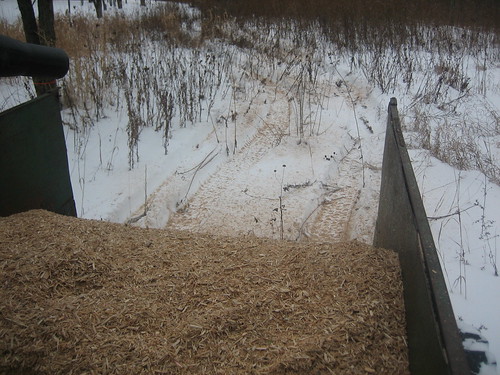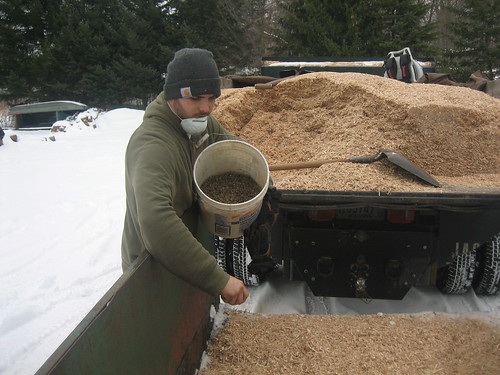From the Wild Side: Winter Is a Good Time for Native Plant Seed Dispersal
From the Wild Side is a new, regular feature on our blog. Author Bob Retko has been on the staff at Lynden since 1966.
Back in 1928 when Mr. & Mrs. Bradley acquired the property that is now the Lynden Sculpture Garden the land was being farmed and pastured. What is now the Village of River Hills was rural and agricultural, with fields and woodlots that contained a more diverse population of native forbs, grasses and woodland plants than River Hills has today. While there are many factors that reduced the diversity of the Village’s flora, perhaps one of the biggest negative factors has been the impact of invasive plant species such as buckthorn, honeysuckle, garlic mustard and reed canary grass.
Prior to about 1990, while an effort was made to control some of the major invasive woody plants such as buckthorn and honeysuckle at Lynden, most of the control efforts failed to keep pace with invasive brush regeneration. In recent years, with the acquisition of a tractor mounted rough cut mower and more effective herbicides for controlling re-growth, the biomass of woody invasives has declined dramatically. In an effort to add more plant diversity to Lynden’s natural areas, the staff has planted both transplants and seeds of native forbs and grasses. If you have walked the trails during the peak of the bloom in mid-July you will see many prairie plant species that did not exist at Lynden just ten years ago. While great strides have been made to restore native plant diversity there are still many field areas dominated by cool season turf grasses or plants like sweet clover or wild carrot.
Late fall or early winter is an excellent time to disperse native plant seeds collected earlier in the season. Our favorite time is after the first snow of the season. The snow allows you to see your coverage pattern and the seeds will rest over the winter, receiving a cold treatment that allows them to break dormancy in spring. The freeze and thaw action over the winter and spring will also allow for better seed to soil contact.
One method we utilize at Lynden involves sawdust, a box-type trailer, native plant seeds and a leaf blower. This method can be used by anyone wanting to add plants to their native plant area, filling voids in the landscape. It may not be as sure-fire as planting transplants or drilling seed into a prepared seedbed but it is easy, cost-effective and fun to do.
First, as native plant seeds ripen during the late summer and into the fall, collect seeds in the field. Not all seeds ripen at the same time, therefore one has to monitor the seed ripeness of the target species. Store the seeds and/or seedpods in brown paper bags in a cool, dry location, making sure the seeds are dry and do not mold over. Brown lunch bags work great and you can buy 50 for a $1. If you are collecting seeds on property you do not own, make sure that you have the permission of the landowner, or the state or federal property manager.
Second, once you have completed harvesting all of your seed species and the seed material is dry, break open any pods, flower heads, etc. Do not worry about cleaning the seeds of petal, hulls, or other debris.
Third, locate a source of untreated sawdust, wood shavings, or fine wood chips. Avoid chips made from curbside brush, as there is a potential for invasive plant seeds being mixed in at the time the brush is chipped.
Fourth, place a layer of sawdust in your container, then a fine layer of seeds, followed by another layer of sawdust. Repeat until you have the desired volume in your container, trailer, etc.
Fifth, disperse the seed/sawdust mixture across the area you intend to seed. If you load your mixture into a trailer or other vehicle cargo box, one person can drive the vehicle slowly while another person blows the seed/sawdust mixture out of the cargo box with a leaf blower in a controlled manner. For smaller areas all one needs to do is broadcast the mixture by hand.
Early winter is a great time to add to the diversity of the landscape you manage. You might not see the results the first year or two, as most prairie plants take that time to establish their root systems. However, you will be surprised in the years ahead to find some native plants you had not seen on your property before. If someone should ask you about them, you can take the credit for your seed dispersal efforts.
- Willy's blog
- Login to post comments




